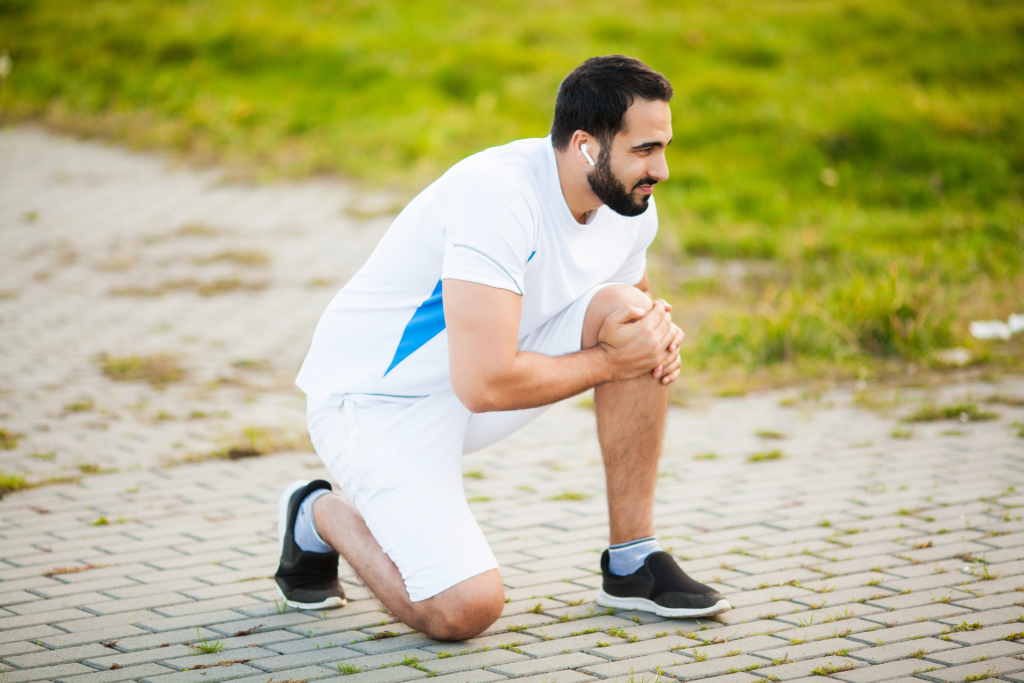Exercise Daily – Muscle adhesions are a connection between types of tissues or organs or both with each other. In the abdomen, this happens mainly through fibrin, in the blood vessels through the adhesion of platelets.
These adhesions occur mainly in the abdomen, pelvic area on blood vessels, and the heart. They are not natural connections but are either innate or arise from various causes. This consists of connective tissues that are permitted with blood vessels.
Muscle adhesion therapy is a modern manual pain therapy method. It is basically similar to pain massage. The aim of the specially trained therapist is to search for feel and release tension by means of precise hand movements.
What Causes Muscle Adhesions?

Muscle adhesions may cause more symptoms than just musculoskeletal pain. They could also be responsible for a multitude of unclear vegetative symptoms such as racing heart, anxiety, abdominal pain, or nausea.
Fibroids provide thickening in the uterine muscle by compressing and overgrowth of connective tissue fibers.
The muscles and connective tissue that surrounds the bones of the body help them move. Collagen, fluid, and fibers make ligaments, tendons, and fascia.
When you perform a difficult workout or experience an injury, it causes microtrauma on microscopic tears in the muscle. Muscle fibers are comparable to a set of resistance bands.
Collagen clumps accumulate on the weak bands as a result of misuse. When it is attached to the strong bands, it eventually forms a knot of scar tissue.
As compared to the fascia or muscle scar tissue, it is less flexible, which results in a reduction in flexibility and mobility.
Scar tissue is very supportive and is strong. For muscle adhesion, it is a normal element of our body’s healing process. However, you can’t get rid of, if you end up with a huge knot in your shoulder and back.
And in the end, it causes greater suffering. Muscle adhesions can form as a result of any repeated action or injury. Scar tissue arises when you strain your muscle. It may only cause limiting motion range and healing process. It may also cause other problems.
Want to know more?
The body produces collagen to mend injured tissue when microtrauma does not heal properly or effectively. Without aligning with the tissue’s natural structure, the collagen fibers work together.
While muscles smooth, soft tissues are unlikely sticky in the muscle adhesion. Tissues pull against one another because of causing tension when the fascia sticks to other tissues.
Fascia is similar to cling wrap in that, and it adheres to itself and other tissues until it can be flattened.
Poor movement patterns can cause tight fascia. It also puts more strain on muscles and joints while throwing the body out of alignment. This may cause discomfort in your body as well as a reduction in the range of joint motion.
It also causes pain and an imbalance of muscles in your body. However, the area loses its blood flow and hydration.
Can Muscle Adhesion Affect Athletic Performance?

Muscle adhesions can cause extreme pain if you are an athlete. It also restricts mobility if you are an athlete who can’t completely extend your arm back. You will suffer while performing because it is too uncomfortable and painful as well.
With every movement, no matter how small, you strain your joints and muscles. Joints allowed rigid parts of the body to move towards one another, such as bending between the humerus and forearm bones.
The complex interactions make it clear that muscle adhesions can be the result of tensions in the muscles themselves.
However, athletes should be careful about muscle injuries which may cause adhesions easily. Especially tennis players, because they suffer more when they extend their arms back.
You cannot pick up the weight while bent down, so you always have problems with your performance if you try to execute a deadlift. The muscle adhesions in your legs or back can make you feel down and weak while performing.
You may also not be able to raise your weight or intensity of workout until you resolve your muscle adhesion.
It is a minor problem that can have major effects. When the tissues cling together, your nerves squeeze, tensions exert on tendons, and you may not be able to manage the stress or load.
Furthermore, numbness, weakness, and other problems are the result of pinched nerves that have a variety of symptoms. It is a frustrating situation if you can’t lift as much as you used to.
You reduce your range of motion, and you might also have a chain reaction like a pinched nerve.
Read: What is Sports Chiropractor and Why Should Every Athlete See One
Symptoms Of Muscle Adhesions
Sleep disorders, anxiety, and a loss in physical performance are common side effects of it. Humans have around 650 muscles that are distributed over the entire body and take on a wide variety of functions. If these are used excessively, muscle adhesion occurs.
These can take different forms from pulling to stabbing etc. They can occur locally or throughout the body. Moreover, muscle adhesion is a result of one-sided stress and tension. This usually affects the shoulder, neck, and back area.
Exercise is also common for muscle adhesion. This might be as simple as tight muscles, strains, or bruises caused by sports injuries. It occurs solely in the affected portion of the body in all of these kinds.
It can usually be traced back to a specific cause. Furthermore, this form of discomfort passes very rapidly. Muscle discomfort that does not come as a result of tension or a sports injury might be the result of an infection.
There are numerous muscle disorders that cause muscle adhesions. It includes numbness, muscle stiffness, twitches, tingle, impaired movement execution, and swelling. Moreover, muscle adhesion results from trauma or overuse of the muscle from physical exertion.
Sports enthusiasts are more likely to experience muscle adhesion than the rest of the population. It includes cramps, sore muscles, partial tears of the muscle and its shell, strains, and serious tears of muscles.
Other causes of muscular discomfort include improper motions such as stiff or neck and medication side effects. Stress, which commonly relates to muscular strain, may also cause muscle adhesion.
It is critical to consult a doctor if the pain lasts for many days, disturbed sleep is accompanied by fever and tremors, or interferes with mobility.
How To Get Rid Of Muscle Adhesions?

If it is not possible to get the pain under control by loosening the muscle adhesions, all that remains is pain therapy.
In this therapy, those affected with muscle adhesions learn to deal with their symptoms differently. Many patients also use physiotherapy to counter their symptoms.
As many different causes, as it can have, there are so many different ways to get relief too. Basically, it can be said that try to eliminate the causes and keep moving as much as possible.
In the case of illness that leads to muscle adhesion, the doctor will make a precise diagnosis and, if possible, prescribe appropriate therapy.
If you want to get rid of muscle adhesions, try to move around a lot. Adequate exercises like cycling, walking, and swimming is considered to be the best way to prevent muscle adhesion.
If you are overweight, try to reduce it. This protects not only your muscles but also your bones, joints, and internal organs. Always try to change your sitting positions more often, get up, and move around.
If you are under stress or emotional tensions so try to find a balance for yourself, maybe through meditation, autogenic training, or a hobby that you enjoy.
Getting physically active can help!
You can actively avoid tension in the neck, shoulder, and bacteria by specifically training the muscles. Well-coordinated training is important for you. Also, try to get advice from professional gyms.
You can also take relaxing massages or heat products which helps you to get rid of muscle adhesions. It provides long-lasting therapeutic deep heat and relaxes your muscles.
At the same time, more oxygen and nutrients are transported to the muscles, which also helps recovery and relieves pain.
Muscle relaxation techniques are effective and popular methods of relieving muscle tension and ensuring peace and balance.
Regular use of techniques can also have a positive effect on one’s own pain perception. Relaxation therapies for muscles are used as additional methods of holistic pain therapy.
Massage therapy is also the best for muscle adhesions. You can take a massage daily or within a week for relaxation and body flexibility. Massages are the best way to release your pain from your soul and body.
Magnesium is an example of a nutrient that is vital for muscle adhesion. Muscle cramps are frequently caused by magnesium insufficiency. Take a proper diet as well, which helps to make your muscles strong.
If you are an athlete, it is necessary you should be careful of muscle injuries because it is more painful for you as compared to other people. Eat healthily and do exercise daily that keeps you out of muscle adhesions.
Conclusion:
Having said that, the article ends here. With this article, we aimed to educate you about muscle adhesions, and hopefully, we are successful in our job. Let us know if this article was helpful to you; and we really appreciate your feedback and look forward to it.






